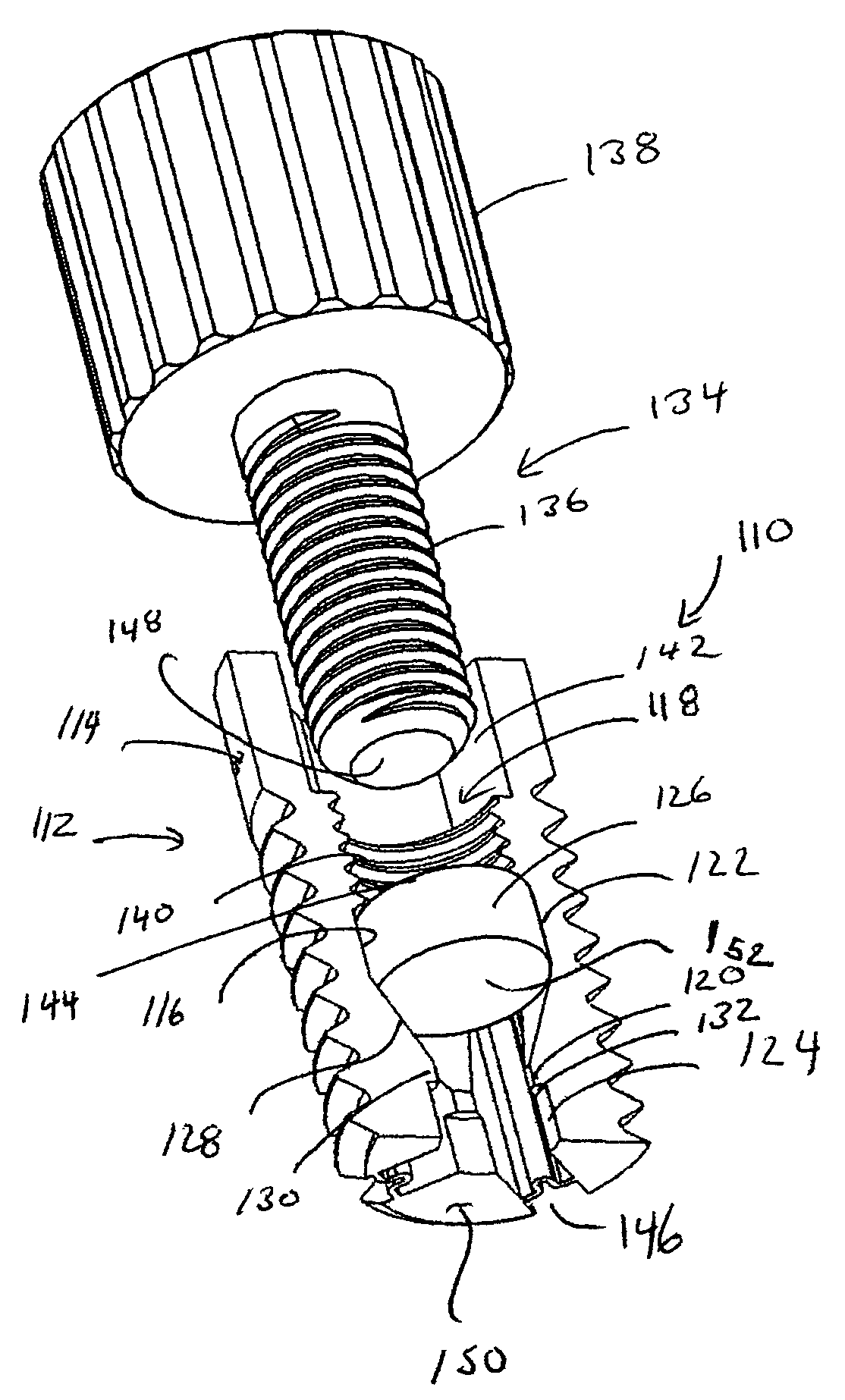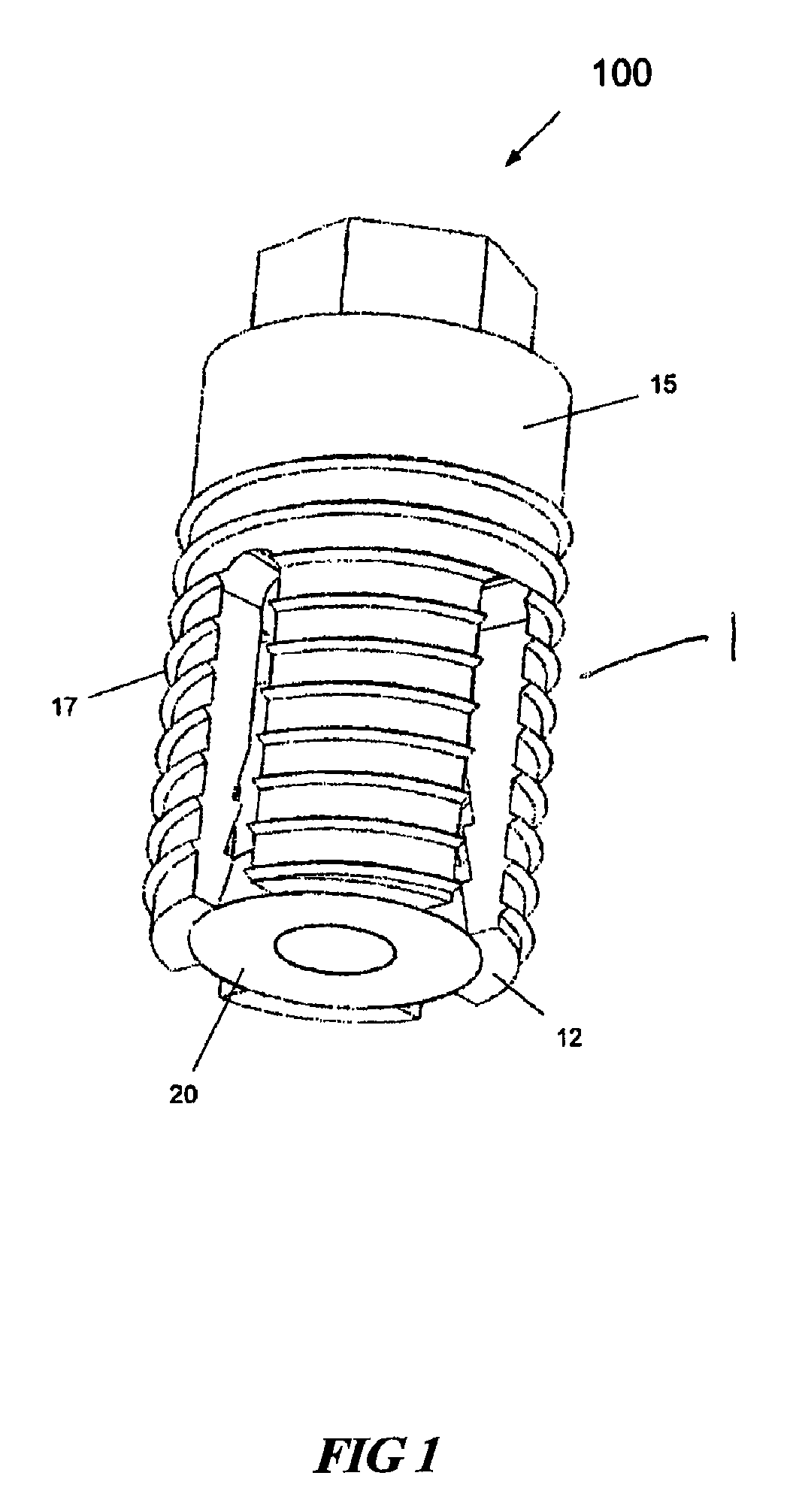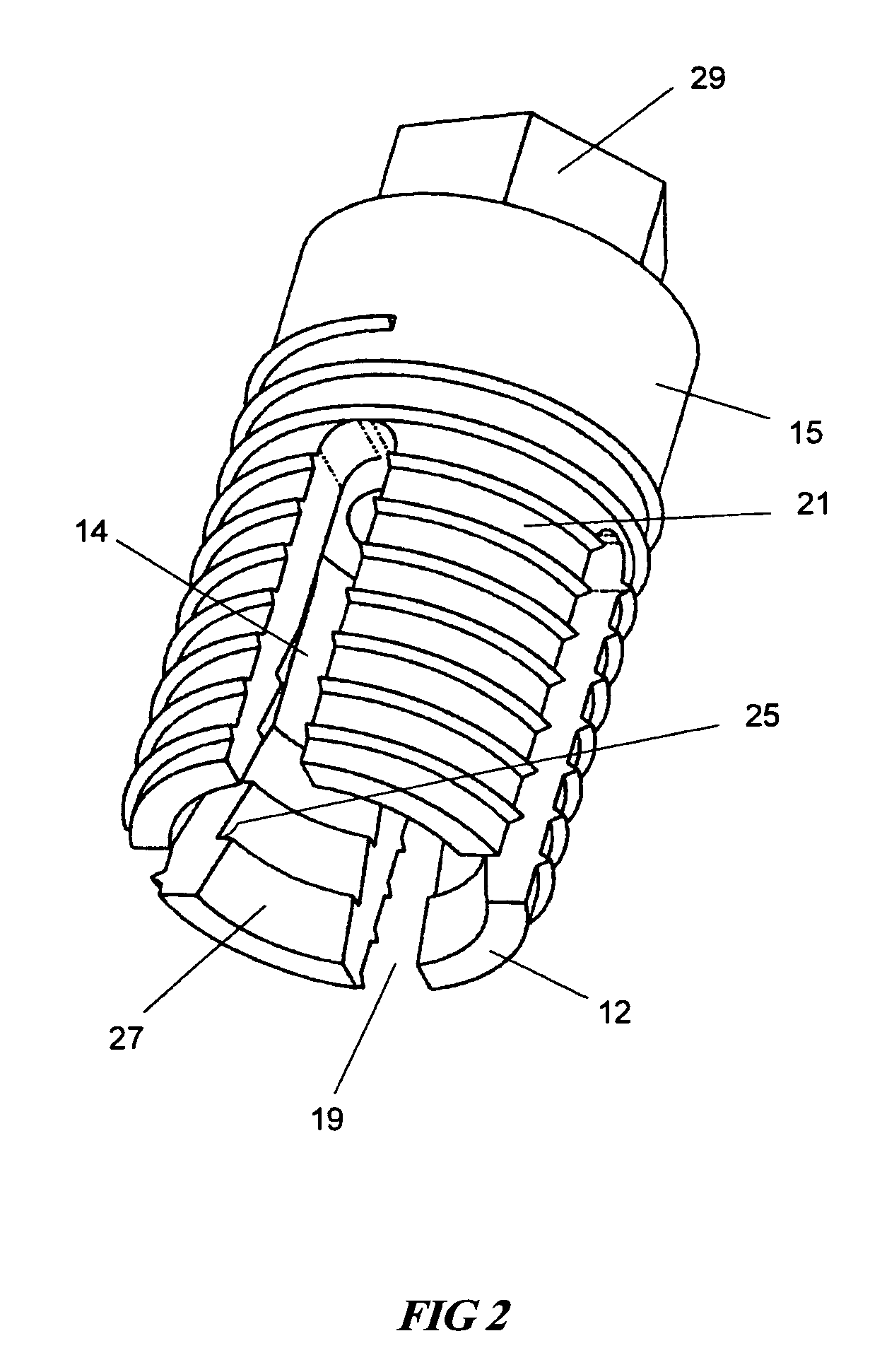Expandable dental implants of high surface area and methods of expanding the same
a dental implant and high surface area technology, applied in dental implants, dental surgery, prosthesis, etc., can solve the problems of improper drilling of the bore, bone resorption, and patients' disassembly and maintenance,
- Summary
- Abstract
- Description
- Claims
- Application Information
AI Technical Summary
Benefits of technology
Problems solved by technology
Method used
Image
Examples
Embodiment Construction
[0063]The following description is provided, alongside all chapters of the present invention, so as to enable any person skilled in the art to make use of the invention and sets forth the best modes contemplated by the inventor of carrying out this invention. Various modifications, however, will remain apparent to those skilled in the art, since the generic principles of the present invention have been defined specifically to provide expandable dental implants of high surface area and to methods of expanding and anchoring the same in situ.
[0064]The term “longitudinal” refers hereinafter to the direction of the long axis or “top-to-bottom” axis.
[0065]The term “apical” refers hereinafter to the direction of the dental root or oral cavity.
[0066]The term “coronal” refers hereinafter to the direction of the crown of the tooth.
[0067]The term “expandable” refers hereinafter to the capability of the implant to increase its lateral dimension.
[0068]The term “expander” refers hereinafter to an...
PUM
 Login to View More
Login to View More Abstract
Description
Claims
Application Information
 Login to View More
Login to View More - R&D
- Intellectual Property
- Life Sciences
- Materials
- Tech Scout
- Unparalleled Data Quality
- Higher Quality Content
- 60% Fewer Hallucinations
Browse by: Latest US Patents, China's latest patents, Technical Efficacy Thesaurus, Application Domain, Technology Topic, Popular Technical Reports.
© 2025 PatSnap. All rights reserved.Legal|Privacy policy|Modern Slavery Act Transparency Statement|Sitemap|About US| Contact US: help@patsnap.com



